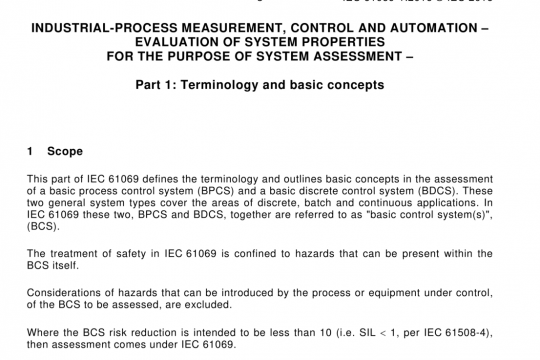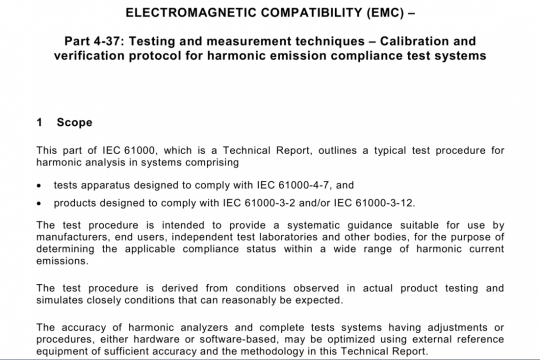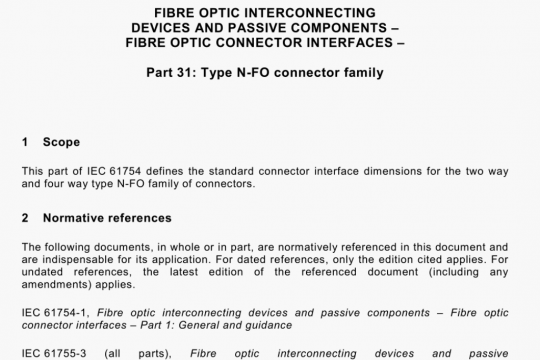IEC TS 63019 pdf free download
IEC TS 63019 pdf free download.Photovoltaic power systems (PVPS) – Information model for availability.
It is not within the scope of this document to determine the method of information acquisition. Relevant IEC documents on data collection and information acquisition are included in the following normative references. IEC 61724-1 has requirements and IEC TS 61724-3:2016, 6.2.5, specifically identifies measured data on this topic.
Data generated during the operation of a PVPS are valuable, establishing who owns the monitoring data and who will have access to the data and for what purpose should be established. Different stakeholders will have different needs, as summarized in Table I (lEA). In Annex E, the monitoring systems are addressed in greater detail.
Availability metrics cannot be derived without important outage information. Questions can require the PVPS operation to properly collect the requisite data, such as what equipment or portion of the plant is failing, how long, how often, and how much energy is being lost and categorized by the information model. Asset management questions include the source of the outage (i.e., Whose clock is it on? Was the outage due to internal or external forces? What power and energy was generated? And, what was expected?).
2 Normative references
The following documents are referred to in the text in such a way that some or all of their content constitutes requirements of this document. For dated references, only the edition cited applies. For undated references, the latest edition of the referenced document (including any amendments) applies.
IEC TS 61724-3:2016, Photovoltaic system performance — Part 3: Energy evaluation method IEEE Std 762-2006, IEEE Standard definitions for use in reporting electric generating unit
reliability, availability, and productivity
3 Terms and definitions
For the purposes of this document, the following terms and definitions apply.
The International Organization for Standardization (ISO) and IEC maintain terminological databases for use in standardization at the following addresses:
• IEC Electropedia: available at http://www.electropedia.org!
• ISO online browsing platform: available at http://www.iso.org/obp
3.1 availability
where the PVPS, a subsystem, or a component is capable of providing service, regardless of whether it is actually in service and regardless of the capacity level that can be provided
Note I to entry: Specific definitions and characterizations are provided on availability and related terms throughout the annexes.
[SOURCE: IEEE 762:2006, 4.1.1, modified — Expansion of the term “unit” to more general applications for PVPS, subsystems and components.]
3.2 capability
degree to which the component, system, or subsystem is operative and functioning according to design specifications and control logic with no technical restrictions or limitations beyond the ones included in the specifications
4 Overview
4.1 Understanding the use of this document
This document defines generic terms of PV systems and environmental constraints in describing PVPS operation and availabilities, restoration, time, and optional energy accounting criteria for operation and maintenance (O&M) and asset management. This document defines terminology and generic terms for reporting availability measurements. A PVPS includes all equipment up to the point of common coupling (interconnection point) to a grid or network that is buying the energy produced; however, PVPS availability can and often is affected by the grid and grid quality. Measurements are concerned with units of time affected; involved components, systems, and subsystems; and site and PVPS O&M. Unavailability measurements are also instrumental for measurement and/or estimation techniques for determining PVPS capabilities or, more specifically, capability loss.
The conditions — environmental and other site aspects — are considered for reporting the station condition and the impact those conditions have on the PVPS, including subsystems and components. Environmental aspects include solar irradiance and other weather and location-specific conditions at the site. System operating constraints due to differential site or as-built characteristics, which might affect or eventually affect energy system performance (typically energy production), are included in the energy calculus (e.g., availability model and energy reporting). This document defines terms for reporting fundamental availability metrics. Formulas and application methods are included in Clause 6 and Annex A and Annex B. The categories can apply to the whole system (with the grid interface also affecting it) or to subsystems and components, wherever the outages or reduced capability occur. It is observed that the more robust and granular data systems are, the better the knowledge of the issues affecting capabilities.IEC TS 63019 pdf download.




